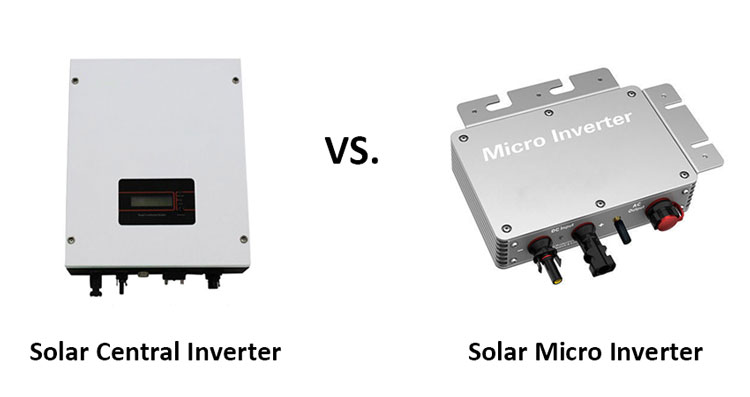The use of solar energy has been growing exponentially due to its environmental benefits and the decreasing costs of solar technology. When setting up a solar power system, one critical decision involves choosing between a solar central inverter and solar micro inverters. These inverters perform the essential function of converting the direct current (DC) generated by solar panels into alternating current (AC) used by most home and commercial appliances. Despite their similar basic function, central inverters and micro inverters have distinct differences. Understanding these differences is crucial for selecting the right system for specific needs.
Solar Central Inverter
It used in photovoltaic solar system in which a number of solar panels are connected in series with each other providing a string, then one string or more will be connected to a single solar inverter called central inverter. The inverter will convert strings DC voltage to AC voltage which can be usable in our house to run our appliances/equipment or to be connected to the electricity grid forming grid tie solar system. Usually the number of solar panels in one string are between five and thirteen panels, it differs based on what will be required string overall power capacity and DC voltage. The central inverter may have one MPPT input of more, if it has one MPPT input, this means that it accepts one or more strings which are the same, we mean they must be equal in number of panels and output power capacity.
Key Features and Benefits:
- High Power Capacity. Central inverters are capable of handling large power outputs, making them suitable for large-scale solar installations like commercial solar farms or extensive residential systems.
- Proven Technology. Central inverters have been in use for many years and their technology is well-established and trusted. They have a track record of reliability and performance.
Application:
- Commercial and Utility-Scale Installations. Central inverters are commonly used in large-scale solar power plants and commercial installations where the cost per watt is a crucial factor, and there is ample space for large inverter units.
- Residential Installations. They can also be used in residential settings, particularly where the roof layout is simple and shading is not an issue.
Solar Micro Inverter
This solar inverter DC input will be connected to one solar panel and may be two solar panels. The AC output from several micro inverters will be combined together and feed an electrical grid switchboard, so each one or two solar panel existing in the solar system array may have a different orientation to gather the maximum amount of solar radiation.
Key Features and Benefits:
- Improved Energy Harvesting. Micro inverters allow each panel to operate independently at its maximum potential. Issues like shading, dirt, or malfunction in one panel do not impact the performance of other panels. This optimization often results in higher overall energy production, especially in installations where shading or varying panel orientations are factors.
- Enhanced Reliability. With micro inverters, the failure of one inverter only affects the corresponding panel, not the entire system. This increases the system's overall reliability.
- Flexibility and Scalability. Adding more panels to a system using micro inverters is straightforward. Each new panel just needs its own micro inverter and can be easily integrated into the existing setup. Micro inverters are ideal for complex roof designs or installations where panels face different directions or have different tilts.
Application:
- Residential Installations. Microinverters are particularly popular in residential settings where roof shapes are complex, and shading issues are more common.
- Small to Medium-Sized Commercial Installations. They are also used in smaller commercial setups where maximizing energy production and ease of expansion are more critical than minimizing initial costs.
- Installations with Shading Issues. Any installation site with partial shading or varied panel orientations can benefit significantly from the use of microinverters.

Which one is better?
There are many advantages of micro inverter over central inverter, the first advantage is that micro grid inverter is performing much better in case of shading, as if there will be a partial shading on a part of our solar system due to chimneys or trees, the overall output power of the string will not be affected, but only the shaded solar panel output power will be affected, while in central inverter the overall output power of the string will be affected, and there will be much power loss. The second advantage is the capability of micro inverter to track maximum power point for each connected solar panel, resulting in high efficiency and output power from the solar system.
The main disadvantage of micro inverter is its high initial costs over the central inverter, as we use many micro inverters to be equivalent to one central solar inverter, also the several micro inverters existing on the site will increase the system complexity, then the probability of fault happening and this will lead to more expensive site services.
In summary, both technologies have their place in the solar energy landscape, and understanding their respective strengths and weaknesses can help in making an informed decision tailored to the specific needs of the project. This two types of solar inverter in Inverter Online Shop are available.
